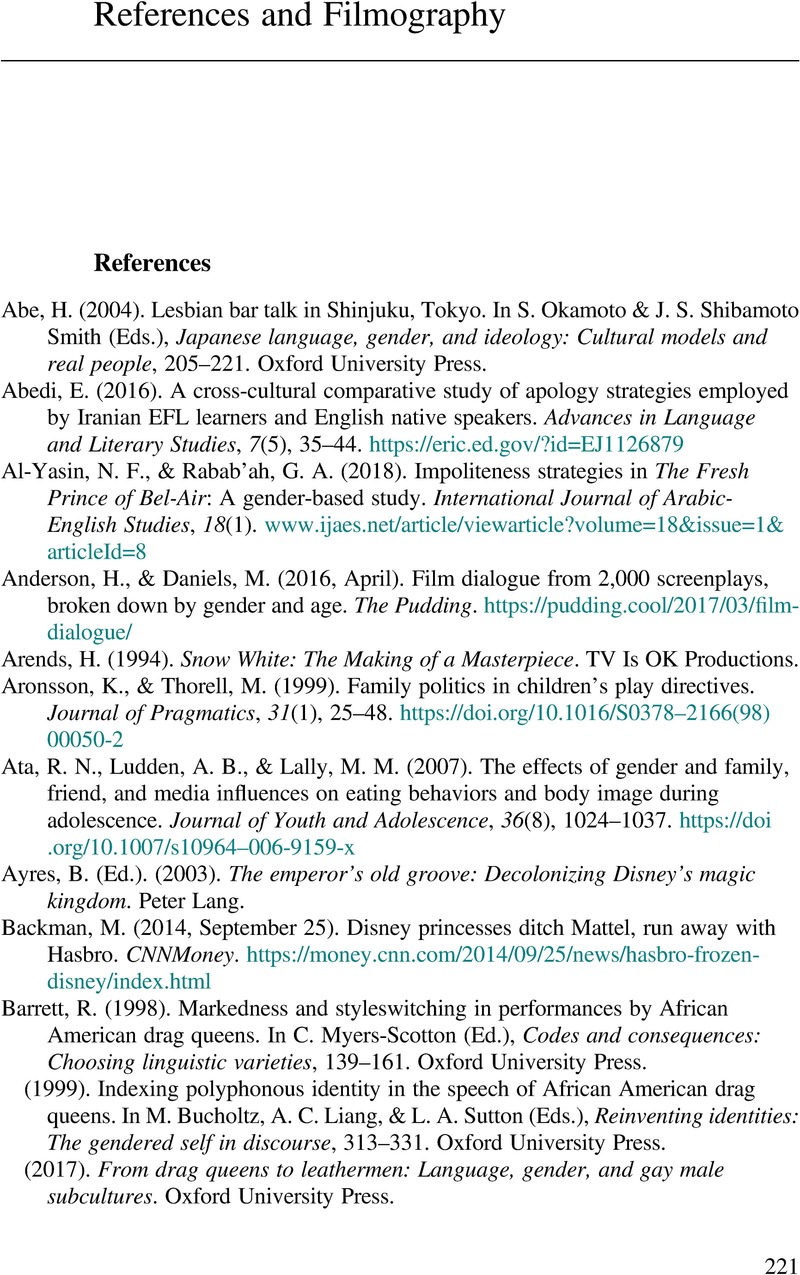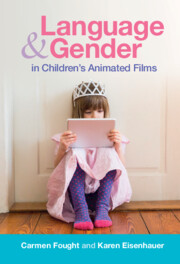Book contents
- Language and Gender in Children’s Animated Films
- Language and Gender in Children’s Animated Films
- Copyright page
- Dedication
- Contents
- Figures
- Tables
- Preface
- Acknowledgments
- 1 Introduction
- 2 Gender, Disney, and Pixar in Historical Context
- 3 Representation, Speech Amounts, and Talkativeness
- 4 Compliments
- 5 Directives
- 6 Insults
- 7 Apologies
- 8 Representing Queerness
- 9 Conclusion
- References and Filmography
- Index
- References
References and Filmography
Published online by Cambridge University Press: 01 September 2022
- Language and Gender in Children’s Animated Films
- Language and Gender in Children’s Animated Films
- Copyright page
- Dedication
- Contents
- Figures
- Tables
- Preface
- Acknowledgments
- 1 Introduction
- 2 Gender, Disney, and Pixar in Historical Context
- 3 Representation, Speech Amounts, and Talkativeness
- 4 Compliments
- 5 Directives
- 6 Insults
- 7 Apologies
- 8 Representing Queerness
- 9 Conclusion
- References and Filmography
- Index
- References
Summary

- Type
- Chapter
- Information
- Language and Gender in Children's Animated FilmsExploring Disney and Pixar, pp. 221 - 235Publisher: Cambridge University PressPrint publication year: 2022



